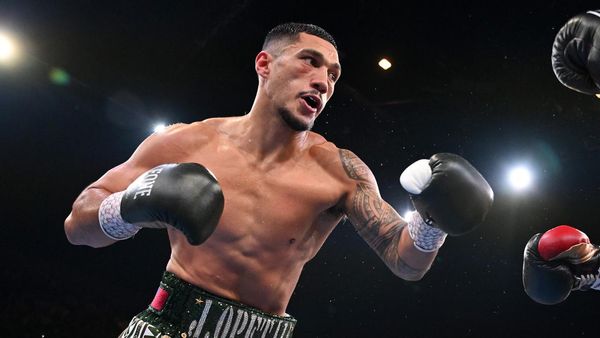
Cognitive bias makes you do some really stupid things. When we do something right, we create our own subjective reality and simply assume it will work again. Alan Joyce is a perfect example.
In 2011, with the strong backing of the Qantas board, Joyce controversially grounded all flights to curb union power and wages. At the time, Joyce accused the unions of “trashing our strategy and our brand … deliberately destabilising the company and there is no end in sight”.
The grounding of the airline was polarising. Many lined up behind Qantas workers and unions. But a significant number also backed Joyce’s actions. Those who supported Joyce and the Qantas board did so on the basis that Joyce was purportedly attacking Qantas workers to help Qantas customers. During the three-day grounding, Joyce claimed that Qantas’ international business was at risk (two years later much of that business was outsourced to Emirates).
While Joyce became a target for vitriol, that hatred soon gave way to admiration. Under Joyce’s watch, Qantas’ share price rocketed from $1.17 in 2014 to $7.34 by December 2019. During the pandemic, Qantas chairman Richard Goyder claimed that Joyce was “the best CEO in Australia by a length of a straight”. In 2019, Qantas was crowned Australia’s strongest brand, while Joyce’s public support for same-sex marriage led to him topping the world’s list of LGBTQIA+ executives. Joyce became the most famous of Australia’s celebrity CEOs.
Then the pandemic happened and Joyce went to a new level completely.
With Qantas teetering on the brink of collapse, Joyce extracted $2.7 billion in funding from Australian taxpayers, which included $900 million in JobKeeper payments, payments for repatriation flights, and a share of the government’s $1.2 billion aviation support package. Joyce, the mathematician from Dublin, proved himself to be Australia’s best-ever lobbyist. He wielded the powerful Qantas lounge membership like a spear.
The problem was, Joyce became too good at extracting favours for Qantas and, along with the Qantas board, completely failed to detect the changing customer sentiment. The $2.7 billion that Qantas received during the pandemic was paid for by Australian taxpayers, and Australians have a long memory.
In 2022, with COVID-19 largely done, Qantas, like most airlines, rushed planes back into the air to meet burgeoning demand. Joyce blamed the inevitable operational issues on passengers “not being match fit”. Credits were almost impossible to redeem (passengers needed to buy more expensive tickets in the same or higher class), the Qantas call centre was overloaded, baggage was misplaced and flight cancellations rocketed. While these issues happened to all airlines, instead of addressing the service issues, Joyce took a very different approach.
He used the operational issues to reduce the number of flights, even as demand continued to soar. In June 2022, allegedly in response to purported fuel cost rises, Qantas “cut a further 5% of capacity on top of the 10% it already announced”. This was a financial masterstroke. By reducing the supply of seats, Qantas was able to inflate the ticket prices by upwards of 40% (especially business fliers who had no choice), supercharging profits and culminating last week in Qantas’ record $2.5 billion earnings.
This was bad, but Qantas largely got away with it because no-one other than maybe the Australian Financial Review‘s Joe Aston realised what it was doing.
Way back in February, when Joyce was commencing his victory lap, Aston noted:
Stand and applaud yet another masterclass in blame externalisation, revel in the audacity of Joyce’s attempt to renounce his own agency. The fares just went up. It was outside of my control. Egregious price-gouging just happened.
What actually happened is that Joyce withdrew supply from the market and, as the dominant player, this enabled him to make the choice to increase his airfares by a terrific magnitude — by 40% in economy (and even more in business) on international trunk routes versus 2019.
After ripping off Australian taxpayers, and then ripping off Australian fliers, Joyce achieved his ultimate triumph: convincing his “good mate” Anthony Albanese to knock back Qatar Airlines’ request for more flights to Australia.
Albanese denies he played a key role in protecting the carrier from extra competition. Qatar’s request was supported by the entire aviation and trade industry — not only did Qatar Airlines continue to ship Australians home during the pandemic (unlike Qantas, which only did it when taxpayers allowed it to profit), but the move would significantly reduce long-haul ticket prices, some of which remain around 50% above pre-pandemic levels.
When the Qatar bid was rejected, the spin machine quickly ramped up — the issue of the forced examination of Australian women at Doha Airport was quietly mentioned, which, naturally, the media fell for hook, line and sinker.
But that excuse, along with the comical claim by Assistant Treasurer Stephen Jones that Qatar’s flights were rejected to ensure Qantas’s sustainability (days after the business reported a $2.5 billion profit), was forensically dismantled by the magnificent Aston, who ran a one-man war against Joyce. The stench became worse when Aston revealed that Albanese’s son was gifted an exclusive Qantas Chairman’s Lounge membership.
If that wasn’t all bad enough, while this was all going on, the ACCC was investigating (and preparing to charge) Qantas for cancelling flights and not telling passengers. The mooted fine of $600 million represents around six months of Qantas’ normalised (pre-pandemic) profits. Meanwhile, Joyce, who turned Qantas into Australia’s most loved brand, has become Australia’s most hated person.
In the space of six months, Joyce went from being dubbed the best CEO by the length of a straight, to being completely forsaken. In a pique of irony, the Chairman’s Lounge, Joyce’s own personal tactical PR weapon, was the vessel of his ultimate reputational destruction.







